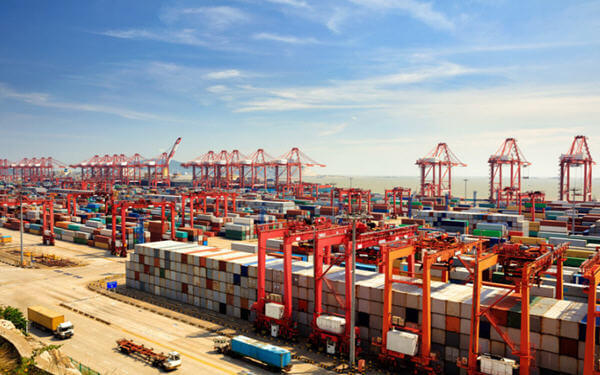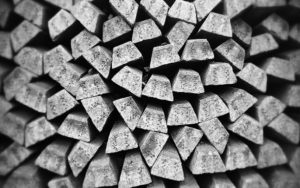China’s metals imports robust despite macro doubts

Industrial metal markets are taking a breather as they await tangible evidence that China’s latest stimulus package is feeding through to a flagging manufacturing sector.
April’s purchasing managers indices, weaker than expected but still just in expansion territory, mean the collective guessing game continues.
More certain is the strength of the country’s imports in the first quarter of this year.
Copper imports almost matched last year’s record pace, while China continues to soak up refined zinc and lead to fill domestic market shortfalls.
Refined nickel imports have been slower than last year but inbound shipments of nickel raw materials continue to boom.
China’s exports of aluminium semi-manufactured products tend to grab the headlines but equally significant are shifts in the country’s trade in bauxite and alumina.
The tin trade picture is different, with China consolidating its position as a consistent net exporter even though imports of raw materials are falling.
Copper – mind the scrap gap
Refined copper imports slowed over February and March but the first-quarter total of 839,000 tonnes was down by only a marginal 1.6 percent on 2018, when imports hit a record 3.8 million tonnes.
Robust imports may in part just be the normal restocking as the country gears up after winter and the Lunar New Year holidays. Shanghai exchange stocks are mirroring this seasonal pattern, falling by 41,733 tonnes over the last month.
An extra element to the mix this year, however, might be the continuing disruption to scrap flows as Beijing steadily tightens the purity threshold for imports.
Scrap imports slumped by 32 percent last year and they fell another 38 percent to 343,000 tonnes in the first quarter of 2019.
The gross tonnage declines overstate the copper content impact as the quality of scrap shipments steadily rises but the continuing turmoil in this segment of the market is generating increased demand for both refined metal and mine concentrates.
Imports of the latter surged 20 percent to 5.6 million tonnes, accelerating last year’s record pace.
Increased import impetus is also coming from new smelters looking to build up stocks. The Antaike research house has forecast 950,000 tonnes of new Chinese processing capacity will come on line this year.
Zinc and lead imports still strong
China’s imports of both zinc and lead surged last year as a domestic environmental crackdown and global raw materials squeeze hit the country’s producers.
That demand for imports of refined metal continued in the first three months of this year. Net refined zinc imports were up 2 percent on last year’s record levels at 139,000 tonnes.
The zinc market narrative is one of better raw materials availability translating into resurgent refined metal supply.
But so far this doesn’t appear to be happening in China. Zinc concentrates imports actually fell by 7 percent to 793,000 tonnes (bulk weight) in the first quarter.
China’s appetite for refined lead from the rest of the world remains equally undiminished.
The country was a consistent net exporter until 2016, when the trade pendulum swung in favour of imports.
And it remained a net importer to the tune of 48,000 tonnes in the first quarter of 2019, already halfway to catching up on last year’s decade-high tally of 102,000 tonnes.
Nickel and aluminum raw materials
Refined nickel imports remained subdued at 40,510 tonnes in the first quarter, down 33 percent year-on-year.
The real story in nickel, however, is playing out on the raw materials stage with imports of ores, ferronickel and matte all booming, up 11 percent, 65 percent and 38 percent respectively.
It’s a reminder that despite all the electric vehicle excitement in the nickel market, physical demand remains dominated by the needs of the stainless steel sector.
In the aluminium sector, the most significant change in trade trends also took place in the raw materials arena.
The country flipped to net alumina exporter last year as global supply was roiled by the partial closure of the Alunorte refinery in Brazil and U.S. sanctions against Rusal which were later lifted at the end of January.
Alunorte is still awaiting formal sign-off to reopen fully but a better supplied western market has seen Chinese exports drop sharply in February and March to a combined 8,000 tonnes from 143,000 tonnes in January.
China seems to be out of the international market for now.
The country’s alumina producers, by contrast, are stepping up imports of bauxite. The first-quarter count of 26 million tonnes was up 27 percent on last year’s record levels.
This may be the start of a longer-running trend as a combination of deteriorating domestic bauxite assets and the environmental clamp-down are pushing more alumina producers to look overseas for feed.
Aluminium scrap imports continued their sharp decline for the same regulatory reasons as copper. Imports of 332,000 tonnes in the first three months of 2019 were the lowest first-quarter total since 2004, although as with copper, higher quality thresholds reduce the metals content impact.
Moreover, unlike copper, China is not short of aluminium. Headline exports of metal and semi-manufactured products were 1.4 million tonnes in the first quarter, up 14 percent year-on-year.
That will do nothing to cool the political heat around China’s role in the global aluminium supply chain, although some voices are now calling for a more nuanced interpretation of that role.
Tin bucks the trend
China swiveled from net importer to net exporter of refined tin last year after the removal of an export tax.
It seems to be consolidating that export status with net outbound shipments almost doubling in the first quarter to 2,600 tonnes.
However, falling imports of raw materials place a question mark against China’s ability to export refined metal at this sort of pace over the medium term.
Imports of concentrates slid 34 percent in the first quarter. Most of that material originated from Myanmar, which has emerged as a major raw materials source for Chinese smelters.
Not for much longer perhaps. The International Tin Association estimates the tin content of Myanmar imports was down by 58 percent year-on-year in the first quarter, reflecting “a long-term trend of declining tin production in Myanmar”.
Source: Reuters
Aluminum
China News
Copper
Industrial Metals
Mining
Zinc








